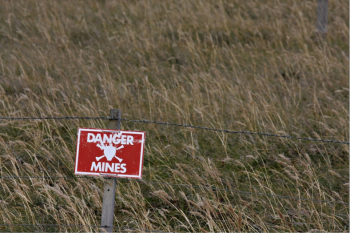
Bubble watch #12 – we’re getting closer
Journos are calling it a melt-up; economists are calling it a bubble. Here at Montgomery we’ve been writing since November last year that investors could expect rising asset prices (read: stocks and property) thanks to a regime shift at the US Federal Reserve under Janet Yellen.
Frustratingly, we also explained that banks and BHP would rally, but we would not participate.
We’ve been spot-on with both calls, even though back then everyone was nervous about the tapering of quantitative easing.
What is interesting is that the ‘Fed regime shift’ theme is now catching more and more acolytes. Generally however, when everyone agrees with you – it’s time to swim in the opposite direction.
Not everyone agrees yet, but read on…
Here’s a small sample of excerpts from our 23 November 2013 blog post, The Bubble We Have to Have, which you can read in its entirety here.
One of the conversations occurring in the halls of global central banks – but not being reported in the Australian press – is whether the Fed is about to embark on a ‘regime change’, by which I mean a very serious shift in policy.
The idea of fuelling a bubble may be gaining momentum.
We all know that the US economist Janet Yellen is taking the Chair at the Fed, and she has said that targeting inflation will play second fiddle to ensuring healthy employment. And the US central bank is widely regarded as having been unsuccessful in its policy settings as they relate to unemployment.
And the post concluded with this quote from Christina Romer:
“Today, I worry that guilt over letting asset prices reach the stratosphere in 2006 and 2007 has made some policymakers irrationally afraid of bubbles. As a result, they focus on the slim chance that another bubble may be brewing rather than on the problems we know we face — like slow recovery, falling inflation, and hesitancy on the part of firms to borrow and invest.”
As I mentioned at the beginning of this article, we are not in a bubble… not yet, anyway.
Janet Yellen, during her Senate confirmation hearings last week, echoed those famous seven words of Mario Draghi when she said, “I consider it imperative that we do what we can to promote a very strong recovery.” Given the US Fed has shown little monetary policy restraint since the GFC began, it’s hard to overstate her words.
Some analysts suggest the word ‘imperative’ implies a sense of urgency that we have not seen from the Fed in some time and which could be “a prelude to more aggressive actions in its attempt to stimulate job creation and a more robust economy.”
While everyone is worrying about tapering, I reckon we might be better positioned if we are worried about the opposite – a Bubble We Have to Have.
Fast-Forward to Today:
On page 11 of today’s The Wall Street Journal (Asia Edition), esteemed former columnist, deputy editor and author of The Great Money Binge: Spending Our Way To Socialism, George Melloan writes:
“Central Bankers at the Jackson Hole symposium on Friday heard a lot of talk from Federal Reserve Chair Janet Yellen about the labour market, over which central bankers have proved to have only limited influence. They heard very little about global asset inflation, over which they could have a lot of influence.
Yet the Fed is in no mood to exercise such influence. As expected, Ms. Yellen said the time is not ripe to raise short-term interest rates, ending six years of a near-zero (“zirp”) policy and restoring something more closely resembling financial normality. Wait until next year remains the Fed’s motto.”
More and more you are going to see this melt-up/bubble-we-have-to-have story promulgated. As a result, we expect it will become a bit of a self-fulfilling prophecy.
But remain on your toes. Eventually, when enough people have bought the idea that rates aren’t going up any time soon and they have all bought stocks, there’ll be no-one left to bid stocks higher, and you won’t need a rate rise to trigger a sell-off.
Wednesday’s edition of the AFR stated that “On Monday, the US S&P500 hit 2,000 points for the first time in it’s history and loud cheers erupted from the floor”.
I have been wary on US stocks for some time and this just reinforces my feelings that certainly the US is looking ‘toppy’.